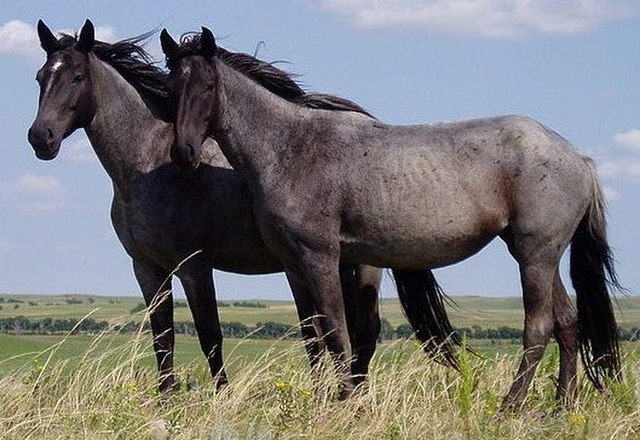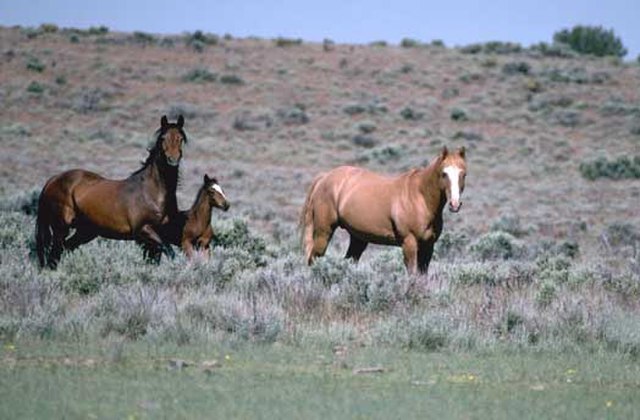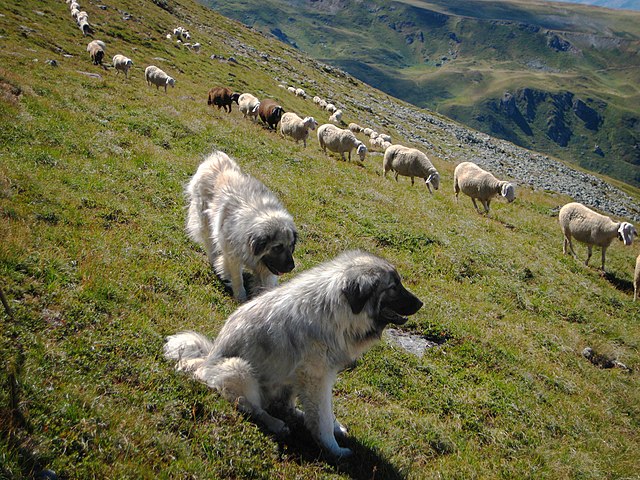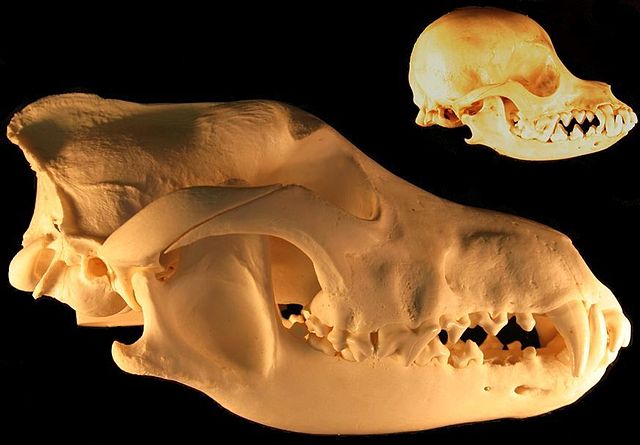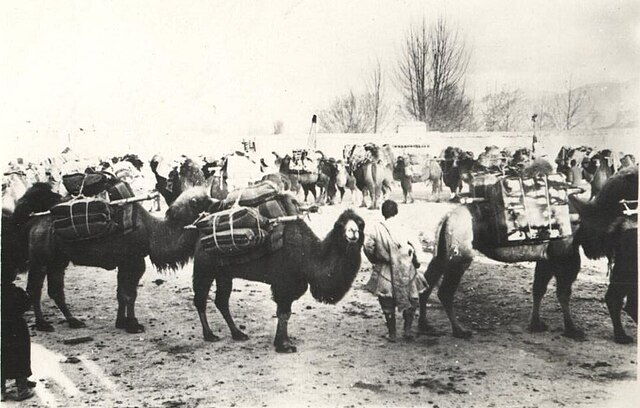The horse is a domesticated, one-toed, hoofed mammal. It belongs to the taxonomic family Equidae and is one of two extant subspecies of Equus ferus. The horse has evolved over the past 45 to 55 million years from a small multi-toed creature, close to Eohippus, into the large, single-toed animal of today. Humans began domesticating horses around 4000 BCE, and their domestication is believed to have been widespread by 3000 BCE. Horses in the subspecies caballus are domesticated, although some domesticated populations live in the wild as feral horses. These feral populations are not true wild horses, which are horses that never have been domesticated and historically linked to the megafauna category of species. There is an extensive, specialized vocabulary used to describe equine-related concepts, covering everything from anatomy to life stages, size, colors, markings, breeds, locomotion, and behavior.
Horse
Points of a horse
Size varies greatly among horse breeds, as with this full-sized horse and small pony.
Bay (left) and chestnut (sometimes called "sorrel") are two of the most common coat colors, seen in almost all breeds.
Domestication is a multi-generational mutualistic relationship in which an animal species, such as humans or leafcutter ants, takes over control and care of another species, such as sheep or fungi, so as to obtain from them a steady supply of resources, such as meat, milk, or labor. The process is gradual and geographically diffuse, based on trial and error.
Dogs and sheep were among the first animals to be domesticated, at least 15,000 and 11,000 years ago respectively.
Rice was domesticated in China, some 13,500 to 8,200 years ago.
Domesticated animals tend to be smaller and less aggressive than their wild counterparts; many have other domestication syndrome traits like shorter muzzles. Skulls of grey wolf (left), chihuahua dog (right)
While dogs were commensals, and sheep were kept for food, camels, like horses and donkeys, were domesticated as working animals.

